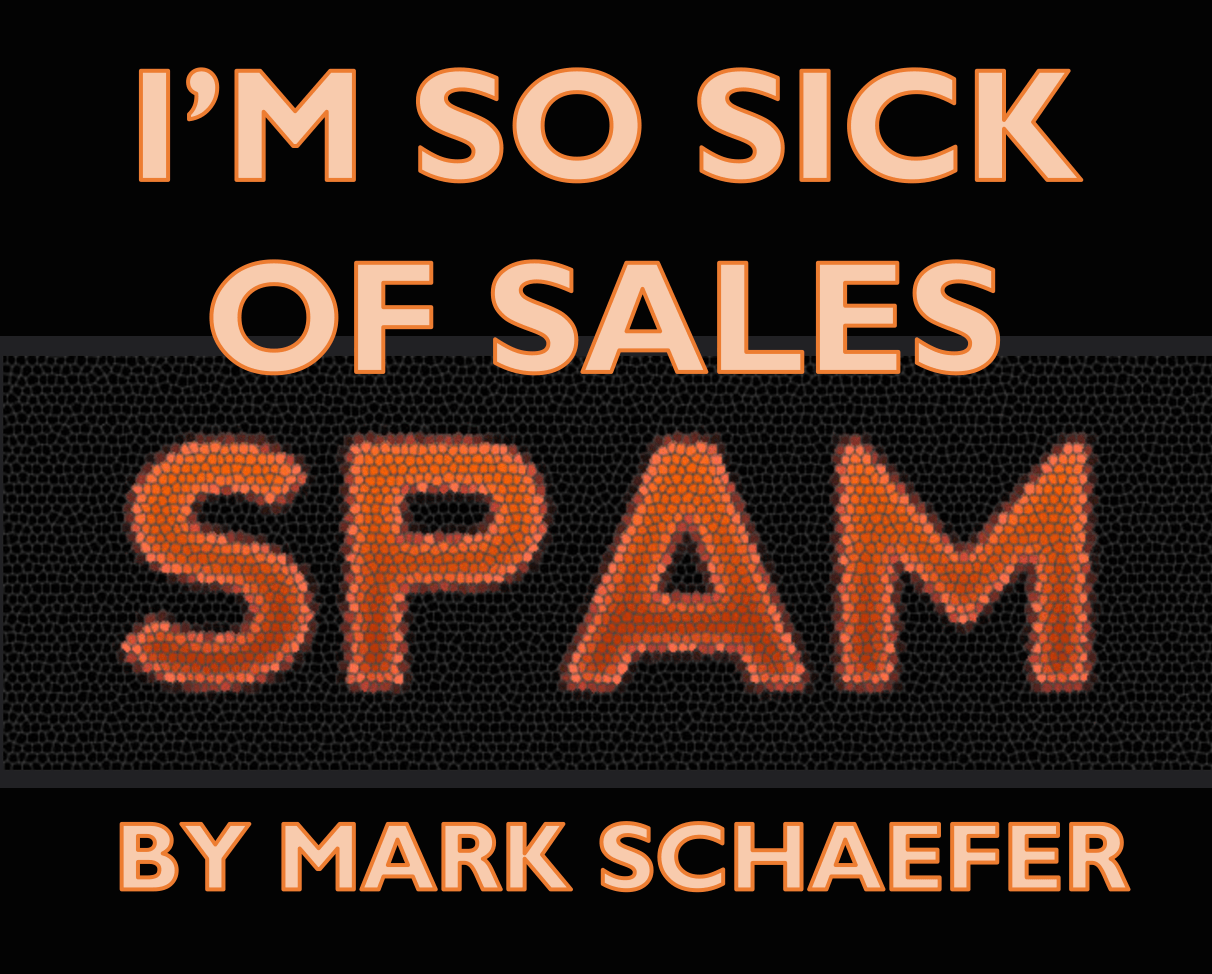
By Mark Schaefer
Marketing technology now provides us with this intoxicating opportunity to automate our sales messages … we can blast product pitches to hundreds, thousands, maybe even millions of people through LinkedIn, email, Twitter and other channels.
But just because you CAN doesn’t mean you SHOULD.
The amount of automated sales spam I receive has just gone out of control. Some of them are so cleverly worded that I have to click to make sure it isn’t something legitimate, which further wastes my time. All these automated pitches — now averaging dozens each day — are wearing me down.
These are unwelcome and un-invited messages. In other words, spam. And yet, the technique seems to be gathering steam.
So I thought I would address this issue. Will it make a difference? Not likely, but maybe it will convert at least one person from the Dark Side of sales spam.
The business case for automated pitches
I posted about this problem on LinkedIn and had a response defending automated sales pitches: “We’re expected to blast pitches because one out of a million will actually respond. Maybe it hits them with the right message at the right time.”
True.
But you are also probably annoying 999,999 people.
I’ve had several people tell me that they’ve built a solid business by generating relentless sales spam. I’m open-minded enough to recognize this possibility.
But maybe there’s a better way. Instead of of shooting buckshot into the air hoping to hit that one in a million, maybe you can use a bazooka and have more directed success.
The business case for authentic connection
Here is how many automated pitches I respond to: zero.
Here is how many requests I respond to from people I know: All of them.
An example …
Magdalena Urbaniak is the global communication director for Brand24, a cost-effective social media monitoring company based in Poland. This is exactly the kind of company who would like to “pitch” a social media influencer.
But, she didn’t.
Instead, Magda followed me on my social platforms, commented on my blogs, and sent me ideas through email. Because she seemed friendly and helpful, I tried Brand24 and really liked it. In fact, I have used it for more than two years now. I gave them some feedback on the product to help their business along.
Magda and I started to become friends. I made a comment on social media one day that I had never been to Poland and I would like to see that country. She said, “I’ll make that happen.” And sure enough she did. I was invited to speak at an amazing event in the magical city of Gdansk, but most important I got to spend some quality time with Magdalena and the other folks from the company. We had transformed a weak relational link of a social media connection into something actionable.
Over the next few months, we kept exploring ways we could work together and eventually Brand24 became a sponsor of my Marketing Companion podcast and now we’re collaborating on a few other projects.
I’m sure there will be lots of other ways we can work together in the future, but none of this would have happened if her company simply “pitched” me. Magda took the time to earn my trust, and when that happens who knows where it will lead?
Building social capital
In my mind, this case study shows the difference between “social selling” and “social spamming.”
Effective social selling means building social capital with your ideal audience. It means making an investment in a relationship before asking for a withdrawal.
It’s not rocket science. Being good at social selling is simply being more of who you are at your best, an extension of your best sales relationships.
Even in the”old days” of B2B selling, I worked on long-term relationships that led to business opportunities by visiting people, having dinner with them, or bringing them information that created an exchange of value. Have those common sense best practices been blurred by the irresistible temptation of email blasts?
You see, I am not a prospect, I’m a person. Maybe someday I could be a prospect, but for now I’m a person, so treat me like a human being instead of a target for spam and “lead nurturing.”
Social selling works
Over the years, I have formed 100 percent of my business partnerships through friendships that started on social media. I pay out hundreds of thousands of dollars each year for services, designers, tech support, writers, editors, admin support, and more.
I work with people I know and trust and many of the people I work with have been with me for five years or more. But not one of those important business relationships started with an unsolicited “pitch” or an email blast.
I know there is an enormous amount of pressure to “sell” and make the quarterly numbers. I’ve been in that world myself for a long time!
But to win in the online world today, you have to move from a mindset of “sell sell sell” to “help help help” and that starts with an investment in social capital, not a request to draw from the bank.
 Mark Schaefer is the chief blogger for this site, executive director of Schaefer Marketing Solutions, and the author of several best-selling digital marketing books. He is an acclaimed keynote speaker, college educator, and business consultant. The Marketing Companion podcast is among the top business podcasts in the world. Contact Mark to have him speak to your company event or conference soon.
Mark Schaefer is the chief blogger for this site, executive director of Schaefer Marketing Solutions, and the author of several best-selling digital marketing books. He is an acclaimed keynote speaker, college educator, and business consultant. The Marketing Companion podcast is among the top business podcasts in the world. Contact Mark to have him speak to your company event or conference soon.
Illustration courtesy Unsplash.com


